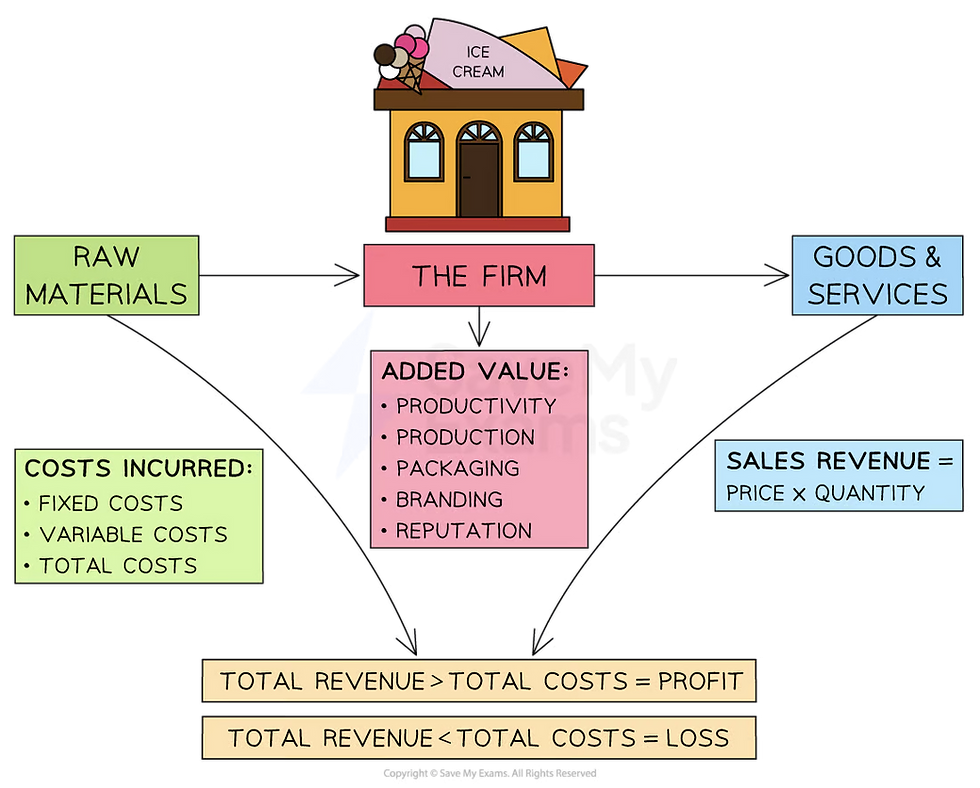#business #thenatureofbusiness
Needs, Wants, Scarcity and Opportunity cost
Businesses thrive when they are able to meet customer needs and wants:
Needs are considered to be essential, e.g. shelter or food.
Wants are desires which are not essential, even if consumers consider them to be essential, e.g Nike trainers.
Due to the problem of scarcity, there is a basic economic problem:
Choices have to be made by producers, consumers, workers and governments, about the most efficient use of resources.
Resources, known as the factors of production, are land, labour, capital and Enterprise.
Opportunity cost is the loss of the next best alternative when making a decision.
There is an opportunity cost in the allocation of resources:
When a consumer chooses to purchase a new phone, they may be unable to purchase new jeans.
The jeans represent the loss of the next best alternative (the opportunity cost).
When a producer decides to allocate all of their resources to producing electric vehicles, they may be unable to produce petrol vehicles.
The petrol vehicles represent the loss of the next best alternative (the opportunity cost)
When a government decides to provide free school meals to all primary students in the country, they may be unable to fund some rural libraries, which may have to close.
The libraries represent the loss of the next best alternative (the opportunity cost).
The Importance of Specialisation
Specialisation occurs when workers focus on one particular role or task and thereby gain significant skill in doing it.
It is now more common due to specialised technology and increasing global competition
Specialisation occurs on several different levels:
On an individual level, through the division of labour.
Division of labour is the separation of work processes into tasks that are completed by separate people or groups of people.
On a business level, e.g. one firm may only specialise in manufacturing drill bits for concrete work.
On a regional level, e.g. Silicon Valley has specialised in the tech industry.
On a global level, as countries seek to trade, e.g. Bangladesh specialises in textiles & exports them to the world.
It results in higher output per worker, which increases productivity.
The Purpose of Business Activity
The purpose of business activity is to produce goods or services that meet customer needs while adding value.
The purpose of business activity is to take inputs, add value to them, and create products which meet customer needs
To produce goods or services
The primary purpose of business activity is to produce goods or services that satisfy a need or demand in the market.
*Goods are physical products, such as bicycles and T-shirts.
*Services are non-physical items such as hairdressing, tourism and manicures.
Meeting customer needs
The ultimate goal is to create products that meet the needs and preferences of customers and provide value to them.
By meeting customer needs, businesses can build customer loyalty, increase brand awareness, and generate revenue.
To add value
The third purpose of business activity is to add value to products or services.
Value-added features can differentiate products from competitors, create a unique selling point, and increase customer satisfaction.
*E.g. A product that is easier to use, has a better design, or is of higher quality than competitors can create a competitive advantage for a business.



How do external factors like market dynamics and competition influence business activities?
What are the different types of business structures, and how do they impact business activities?
How do businesses manage resources to achieve their goals?
What is the significance of innovation in business activities?
How do businesses measure and evaluate their performance?
What role do stakeholders play in business activities?